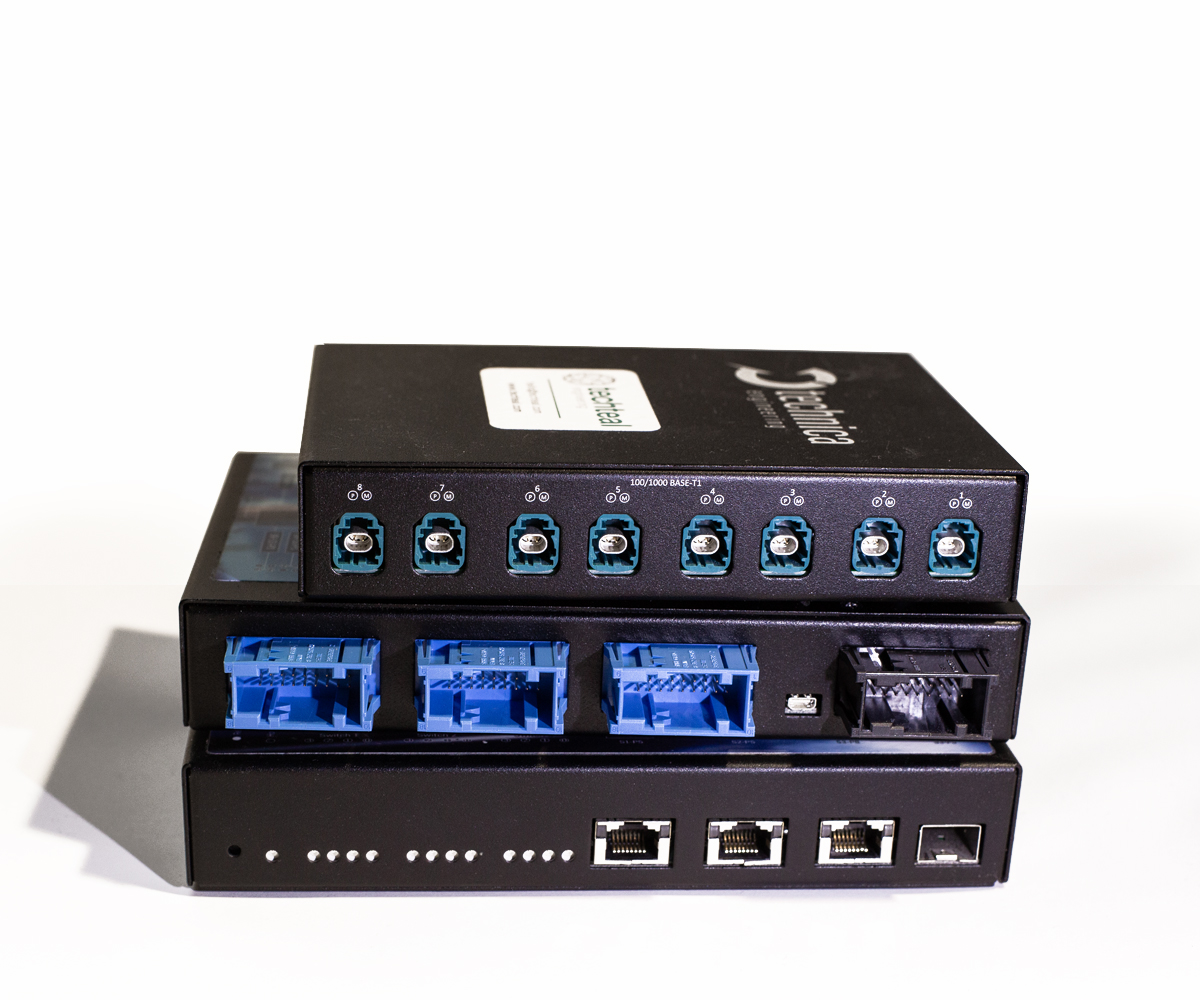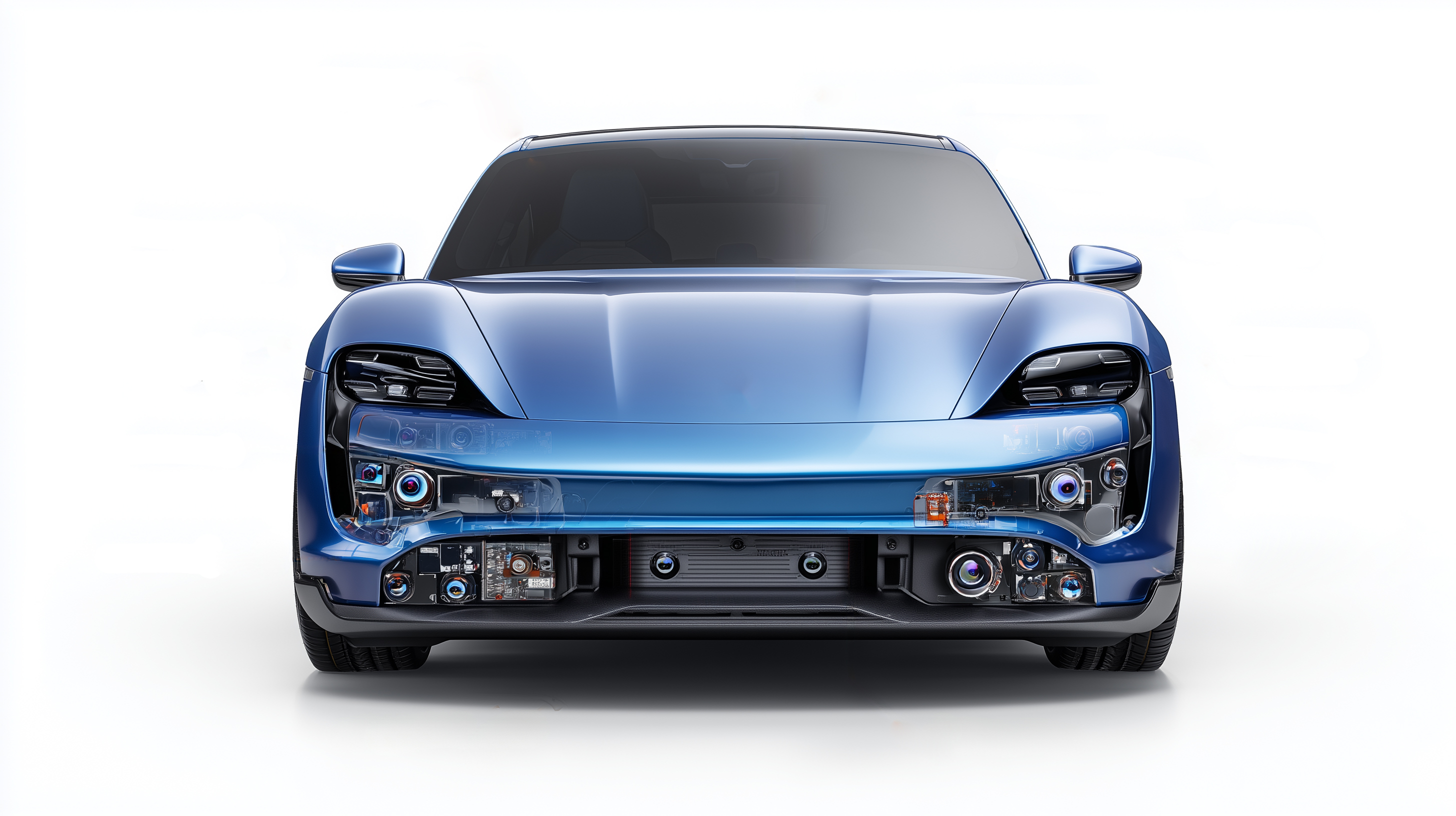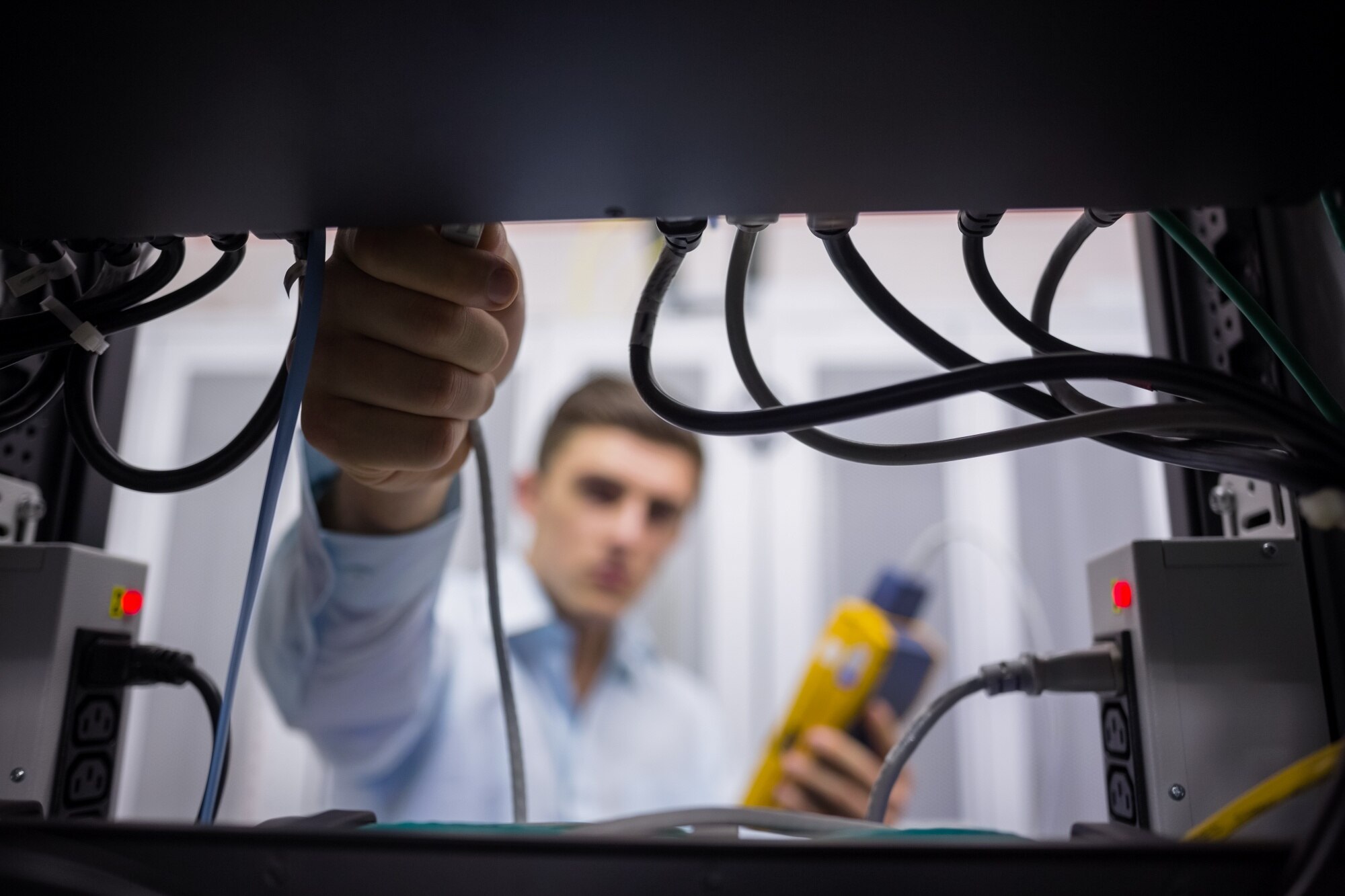You're working hard to make sure your AUTOSAR Ethernet stack communicates flawlessly within your ECU. But without the right tools, verifying performance can be a challenge. Enter Technica's Enhanced Ethernet switch (EES), designed to seamlessly integrate with AUTOSAR Ethernet stacks and bring a host of benefits. From testing network validation to ensuring security and scalability, this integration is your gateway to a smoother development process. Stick around to uncover how this powerful duo can enhance your project outcomes.

Integrating an AUTOSAR Ethernet stack with Technica's EES involves examining the compatibility and support for automotive profiles. This section delves into how these components work together to ensure seamless communication.
AUTOSAR standards are crucial for the interoperability of automotive components. The AUTOSAR Ethernet stack manages communication services within the ECU, encompassing protocols like TCP/UDP/IP and SOME/IP. The EES, a managed Automotive Ethernet Switch supports Time-Sensitive Networking (TSN), VLAN, and MACsec, aligning with these standards.
The integration process typically involves connecting Ethernet ports of the ECU to the EES. This setup allows the AUTOSAR stack to communicate over standard Ethernet frames. Since the Technica's EES supports standard IEEE Ethernet and automotive profiles, it can seamlessly integrate with the AUTOSAR Ethernet stack. This out-of-the-box compatibility ensures that the switch can directly interface with the AUTOSAR stack without requiring additional adjustments.
Achieving compatibility with AUTOSAR standards ensures that automotive communication systems can efficiently handle complex tasks such as real-time data processing and secure communication.
The Technica's switch is designed to cater to the specific needs of automotive systems. It supports various automotive profiles that enhance its utility in vehicle networks. This includes features like TSN, which are essential for managing time-sensitive applications.
With the EES, automotive engineers can configure and verify TSN streams, ensuring that timing requirements for safety-critical applications like ADAS and autonomous driving are met. The switch's support for automotive profiles enables it to work in tandem with the AUTOSAR Ethernet stack, providing a robust platform for testing and development.
The switch ability to handle automotive profiles ensures that the AUTOSAR stack can operate in a realistic vehicle environment. This support is crucial for ensuring the reliability and performance of automotive networks, especially in scenarios where precise timing and synchronization are required.

Integrating the AUTOSAR Ethernet stack with the EES offers several advantages. This section explores the benefits, including network validation, TSN evaluation, security validation, scalability, and early debugging capabilities.
Network validation is essential for ensuring that automotive Ethernet systems function as intended. The Enhanced Ethernet Switch can emulate real in-vehicle Ethernet switching behaviors, providing a realistic testing environment for the AUTOSAR stack.
This emulation allows engineers to test the ECU's AUTOSAR stack in conditions that closely mimic actual vehicle integration. By simulating real-world network conditions, the Enhanced Ethernet Switch helps identify potential issues before deploying the system in a vehicle.
Thorough network validation and testing are vital for ensuring that the AUTOSAR Ethernet stack can handle the demands of modern vehicle networks. By using the EES, engineers can gain insights into the performance and reliability of their systems, reducing the risk of deployment issues.
Time-Sensitive Networking (TSN) is crucial for applications requiring precise timing and low latency. The AUTOSAR Ethernet stack supports TSN features, such as 802.1AS gPTP and 802.1Qbv. The EES facilitates the configuration and verification of TSN streams.
By enabling the evaluation of TSN, the switch ensures that the AUTOSAR stack meets timing requirements for critical applications. Furthermore, the Enhanced Ethernet Switch supports MACsec, allowing engineers to validate secure communication between the AUTOSAR stack and ECU.
Security validation ensures that communication over the network is protected against unauthorized access. By leveraging TSN and MACsec capabilities, engineers can confidently deploy systems that meet both performance and security standards.
Scalability is a significant consideration in automotive networks. The EES supports multi-ECU networks, enabling the evaluation of interoperability, bandwidth, and Quality of Service (QoS) across several AUTOSAR-based ECUs.
Additionally, the EES provides diagnostic and capture features such as mirror ports and statistics. These features facilitate early debugging by making it easier to identify and resolve communication issues between AUTOSAR stacks in different ECUs.
Scalability and early debugging capabilities are crucial for developing robust automotive systems. By using the EES, engineers can ensure that their networks can grow and adapt to future demands while maintaining high performance and reliability.

Understanding the practical applications of integrating the AUTOSAR Ethernet stack with the EES is essential for automotive engineers. This section outlines typical use cases, including testing protocols, synchronization, and frame size considerations.
Testing the Diagnostic over IP (DoIP) and SOME/IP protocols is a critical aspect of vehicle network development. These protocols enable communication between electronic control units (ECUs) and diagnostic tools, facilitating vehicle diagnostics and service discovery.
The EES provides an environment for testing these protocols before integrating them with an OEM backend. Engineers can evaluate SOME/IP service discovery across multiple AUTOSAR nodes, ensuring that the protocols function correctly in a networked environment.
By testing DoIP and SOME/IP using the EES, engineers can identify and address potential issues early in the development process. This proactive approach helps ensure that the protocols work seamlessly in production vehicles, enhancing the reliability of diagnostic and service discovery functions.
Synchronization and switching delays are critical considerations in automotive networks, especially for applications like ADAS and infotainment systems. The EES supports TSN features, enabling the verification of synchronization and time-triggered communication.
By using the EES, engineers can evaluate switching delays and latency budgets, ensuring that the network meets the stringent timing requirements of automotive systems. The switch's capabilities allow for precise measurement of jitter, latency, and synchronization accuracy.
Addressing synchronization and switching delays is essential for maintaining the performance and reliability of automotive networks. By leveraging the EES, engineers can ensure that their systems can handle the demands of modern vehicle applications.
Frame size and throughput testing are crucial for evaluating the performance of automotive networks. The AUTOSAR Ethernet stack is typically limited to a standard Maximum Transmission Unit (MTU) of 1,500 bytes. In contrast, the EES supports jumbo frames, allowing for extended frame sizes up to 9k bytes.
This capability enables engineers to test how the network behaves when ECUs with standard MTU coexist with devices using jumbo frames, such as cameras and high-bandwidth sensors. By conducting throughput testing, engineers can validate the reliability of the AUTOSAR stack in mixed-MTU networks.
Frame size and throughput testing provide valuable insights into the performance of automotive networks under various conditions. By using the Enhanced Ethernet Switch, engineers can ensure that their systems can handle diverse network configurations without compromising reliability.

Advanced testing features offered by the Technica's EES provide additional capabilities for evaluating the AUTOSAR Ethernet stack. This section explores features such as TSN and security, VLAN and QoS handling, and diagnostic tools.
The Technica's EES supports TSN features and MACsec, enabling comprehensive testing of both timing and security aspects. TSN features, including time-aware scheduling and gPTP synchronization, are essential for applications requiring precise timing.
By implementing MACsec, the Technica's EES ensures secure communication on the network. Although the AUTOSAR Ethernet stack does not natively handle MACsec at Layer 2, it relies on the switch for encryption and decryption of Ethernet frames.
These advanced features are crucial for ensuring that the AUTOSAR Ethernet stack meets the stringent timing and security requirements of modern vehicle networks. By utilizing the Technica's EES, engineers can confidently deploy systems that align with industry standards.
VLAN tagging and Quality of Service (QoS) handling are essential for managing network traffic in automotive environments. The AUTOSAR Ethernet stack supports VLAN tagging, while the Technica's EES provides fine-grained VLAN and QoS configuration.
By leveraging the EES, engineers can validate that the AUTOSAR Ethernet ECU communicates effectively across different VLANs. The switch also allows for priority traffic shaping, which is critical for balancing traffic between ADAS and infotainment systems.
Effective VLAN and QoS handling ensures that automotive networks can efficiently manage diverse traffic types without compromising performance. The EES provides the tools necessary for optimizing network traffic management in a vehicle environment.
Diagnostics and debugging tools are vital for identifying and resolving issues in automotive networks. The Technica's EES offers features like port mirroring and statistics counters, which facilitate the capture and analysis of network traffic.
Engineers can use port mirroring to capture AUTOSAR stack traffic in tools like Wireshark, providing insights into network behavior. Statistics counters enable the identification of issues such as dropped frames, malformed packets, and VLAN mismatches.
By utilizing the diagnostics and debugging tools offered by the EES, engineers can conduct root-cause analysis during integration and validation. These tools provide the visibility needed to ensure the reliability and performance of automotive networks.

Scalability and mixed environment testing are essential for ensuring that automotive networks can handle diverse conditions. This section explores how the Technica's EES facilitates testing in various scenarios.
Simulating high network load is critical for evaluating the resilience of automotive networks. The EES can simulate network load, enabling stress-testing of the AUTOSAR Ethernet stack's behavior under congestion and high burst traffic.
By simulating high network load, engineers can validate the ECU's ability to handle large streams of data from sensors and other devices. This testing ensures that the network can operate reliably under challenging conditions.
High network load simulation is crucial for evaluating the robustness of automotive networks. The Technica Engineering's EES provides the tools necessary for conducting comprehensive stress tests, ensuring that systems can handle the demands of modern vehicle applications.
Testing in mixed-MTU networks is essential for evaluating the performance of automotive systems in environments where standard and jumbo frames coexist. The Technica Engineering EES supports jumbo frames, allowing engineers to test network behavior in such scenarios.
By testing in mixed-MTU networks, engineers can confirm that the AUTOSAR Ethernet stack performs reliably without fragmentation issues or dropped packets. This testing is particularly important for environments with high-bandwidth sensors and devices.
Testing in mixed-MTU networks provides valuable insights into the performance and reliability of automotive systems. The Technica's EES enables engineers to conduct thorough evaluations, ensuring that their systems can operate effectively in diverse network conditions.
To deepen your understanding and facilitate the integration of the AUTOSAR Ethernet Stack with Technica's Enhanced Ethernet Switch, consider exploring the following resources:
These resources will provide you with a robust foundation for understanding the technical and practical aspects of integrating AUTOSAR Ethernet stacks with advanced networking equipment.